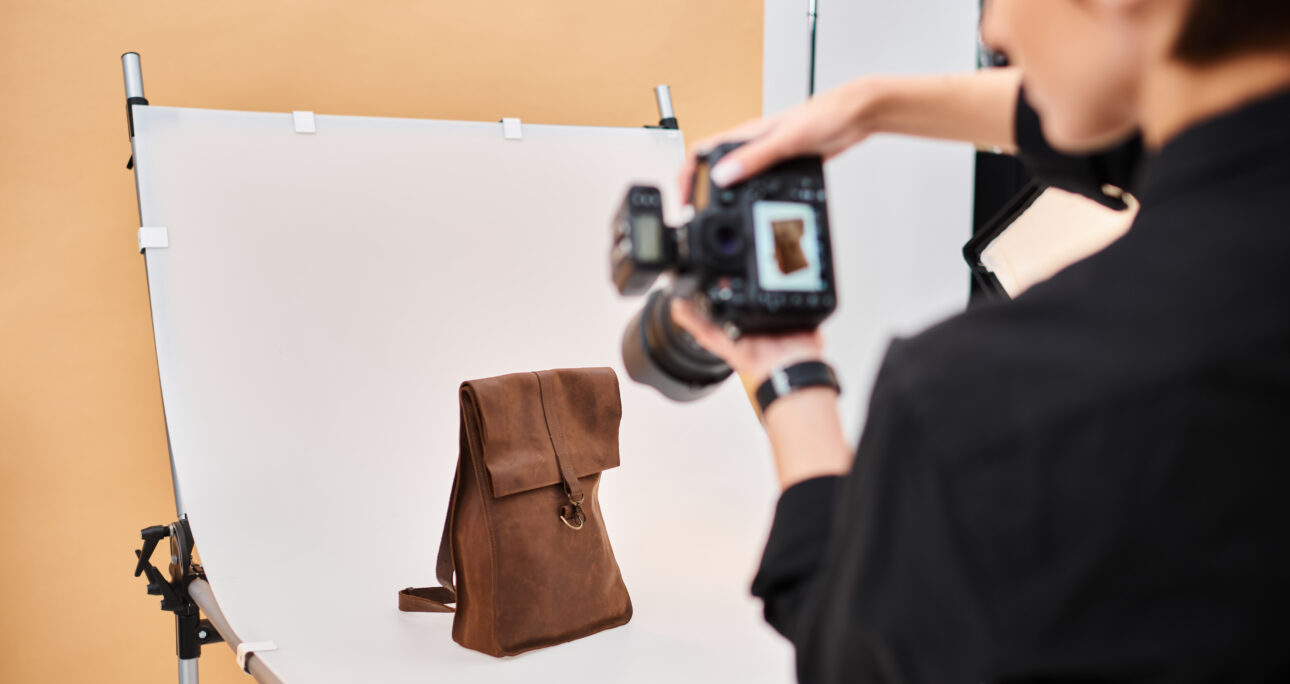In the modern advertising landscape, visuals are king. The rise of social networks and digital platforms has made images and videos essential tools for capturing consumers’ attention. One of the most powerful visual assets in a brand’s toolkit is advertising photography. A well-executed photoshoot can increase brand visibility, create a memorable identity, and directly influence purchasing decisions. But how exactly does advertising photography impact businesses, and why is it crucial for successful marketing campaigns?
Why Advertising Photography Matters
Visuals have a significant influence on consumer behavior. Studies show that people process visual information 60,000 times faster than text. This means your audience is more likely to engage with an image before reading a single word of your ad copy. Advertising photography serves as the face of your campaign, instantly establishing an emotional connection between your product or service and the viewer.
Furthermore, the quality of your photography reflects the perceived quality of your brand. Sharp, professional images convey the value of your products, while low-quality visuals can diminish your brand’s credibility. In this blog, we’ll explore the importance of advertising photography, its various types, and how businesses can use it to increase their brand’s success.
The Power of Advertising Photography
When executed effectively, advertising photography grabs attention and tells a story. Whether it’s a product ad or a lifestyle shot that shows how your product fits into everyday life, the right visuals can turn passive viewers into active customers. A memorable image sticks in the minds of potential buyers, enhancing brand recall and increasing the likelihood of purchase.
Types of Advertising Photography
There are various types of advertising photography, each serving different purposes based on the campaign’s objectives and the product or service being promoted. Let’s take a look at some common categories:
Product Advertising Photography
Product photography is the most direct form of advertising photography. It focuses on highlighting the features and benefits of a product in a way that appeals to potential buyers. Whether it’s showcasing intricate details of a luxury item or presenting everyday products in an attractive setting, product photography plays a vital role in driving conversions. Brands use these images across multiple platforms, from e-commerce websites to social media ads, print catalogs, and billboards. When done right, these images make the product irresistible and encourage customers to take action.
Lifestyle Advertising Photography
Lifestyle photography portrays products in real-world situations, showing how they integrate into the consumer’s life. Rather than isolated product shots, lifestyle photography tells a story where the product is seamlessly woven into the scene. For instance, a sportswear brand might use lifestyle photography to show athletes using their gear during a workout, highlighting the product’s functionality and appeal.
Fashion Advertising Photography
In the fashion industry, advertising photography is essential. The visuals are designed not just to showcase clothing but also to inspire and captivate the audience. Fashion photography creates an aspirational image that consumers want to be a part of. Whether for print ads, online lookbooks, or social media campaigns, fashion brands rely on advertising photographers to elevate their visual appeal.
Conceptual Advertising Photography
Conceptual photography is more abstract and often used in artistic marketing campaigns. It involves crafting unique, sometimes surreal, images that convey a specific message or emotion. These images may not directly show a product but instead evoke a feeling or brand identity that resonates with the audience. This type of photography is common in high-end campaigns where brands focus on selling an experience rather than just a product.
Key Elements of a Successful Photoshoot for Advertising
Planning a successful advertising photoshoot requires creativity and attention to detail. The following elements are crucial to ensuring your photography aligns with your marketing goals:
Creative Concept
Before the photoshoot begins, a clear creative concept is essential. What story do you want your images to tell? How do you want your brand to be perceived? Defining the creative direction ensures that the photos align with your overall marketing strategy.
Lighting and Composition
Lighting is one of the most important aspects of photography. In advertising photography, proper lighting enhances the product’s features, creates mood, and ensures visual consistency across the campaign. Composition, or how elements are arranged within the frame, is also critical. A professional photographer will use techniques like the rule of thirds to focus attention on the product while maintaining a visually appealing balance.
Professional Equipment
Investing in high-quality equipment is non-negotiable for advertising photography. Professional-grade cameras, lenses, and lighting setups ensure that your images are sharp, clear, and vibrant. The right tools allow photographers to capture even the smallest details, which is especially important for product photography.
Post-Production
After the photoshoot, editing and retouching come into play. Post-production allows for color correction, background adjustments, and fine-tuning to make the images pop. It can transform a good photo into a stunning one, ensuring your product looks its best.
Best Practices for Product Advertising Photography
To get the most out of your product advertising photography, follow these best practices:
Highlight Unique Selling Points
Your product images should clearly showcase the features that set your product apart from competitors. For example, if you’re promoting a new smartwatch, highlight its innovative design, durability, or unique technology.
Use Multiple Angles
For e-commerce platforms and online ads, providing multiple angles of the product gives potential buyers a comprehensive view. This helps customers make informed purchase decisions.
Show Products in Context
Instead of photographing the product against a plain background, consider using lifestyle photography to show how it fits into the consumer’s life. For example, if you’re promoting a coffee maker, show it in a cozy kitchen setting with someone enjoying a fresh cup of coffee.
Optimize for Different Platforms
Different platforms have different image requirements. Make sure your product photos are optimized for various uses, including high-resolution versions for print ads and smaller, faster-loading images for websites or mobile apps.
Photography Ads: Combining Creativity and Strategy
Successful photography ads combine creativity with a solid marketing strategy. It’s not enough to create beautiful images; those images must also serve a purpose—whether to drive sales, build brand awareness, or generate leads.
Consistency Across Platforms
Ensure that your advertising images maintain consistency in style, tone, and messaging across all platforms, from social media to billboards. This reinforces your brand’s identity and helps consumers recognize your ads no matter where they see them.
SEO Optimization
When using images on your website or in digital ads, optimize them for SEO. Use alt text with relevant keywords such as “advertising photography” or “product advertising photography” to improve your website’s search ranking.
Conclusion
Advertising photography is far more than just attractive visuals. It’s a powerful tool that can shape your brand’s image, communicate your message, and drive real business results. Whether you want to boost your product’s appeal, tell a compelling brand story, or simply capture the attention of your target audience, investing in professional advertising photography can set your brand apart from the competition.
Frequently Asked Questions
1. How much does advertising photography cost?
A: The cost of advertising photography can vary widely based on factors such as the photographer’s experience, the complexity of the shoot, location, and post-production requirements. On average, prices can range from ₹10,000 to ₹1,00,000 or more, depending on the scope of the project.
2. Can I use stock photos for advertising?
A: While stock photos can be a cost-effective solution, they often lack the uniqueness and brand-specific appeal that custom advertising photography provides. For businesses looking to create a strong, authentic brand identity, investing in original photos is usually a better choice.
3. What’s the difference between product photography and lifestyle photography?
A: Product photography focuses on the product itself, usually in a clean, controlled environment, while lifestyle photography showcases the product in use, integrated into a real-world scenario. Both have their place in advertising, depending on the campaign’s goals.
4. How do I choose the right advertising photographer?
A: Look for photographers with experience in your industry, a strong portfolio, and the ability to understand and execute your brand vision. Clear communication and a creative approach are key to successful collaboration.




